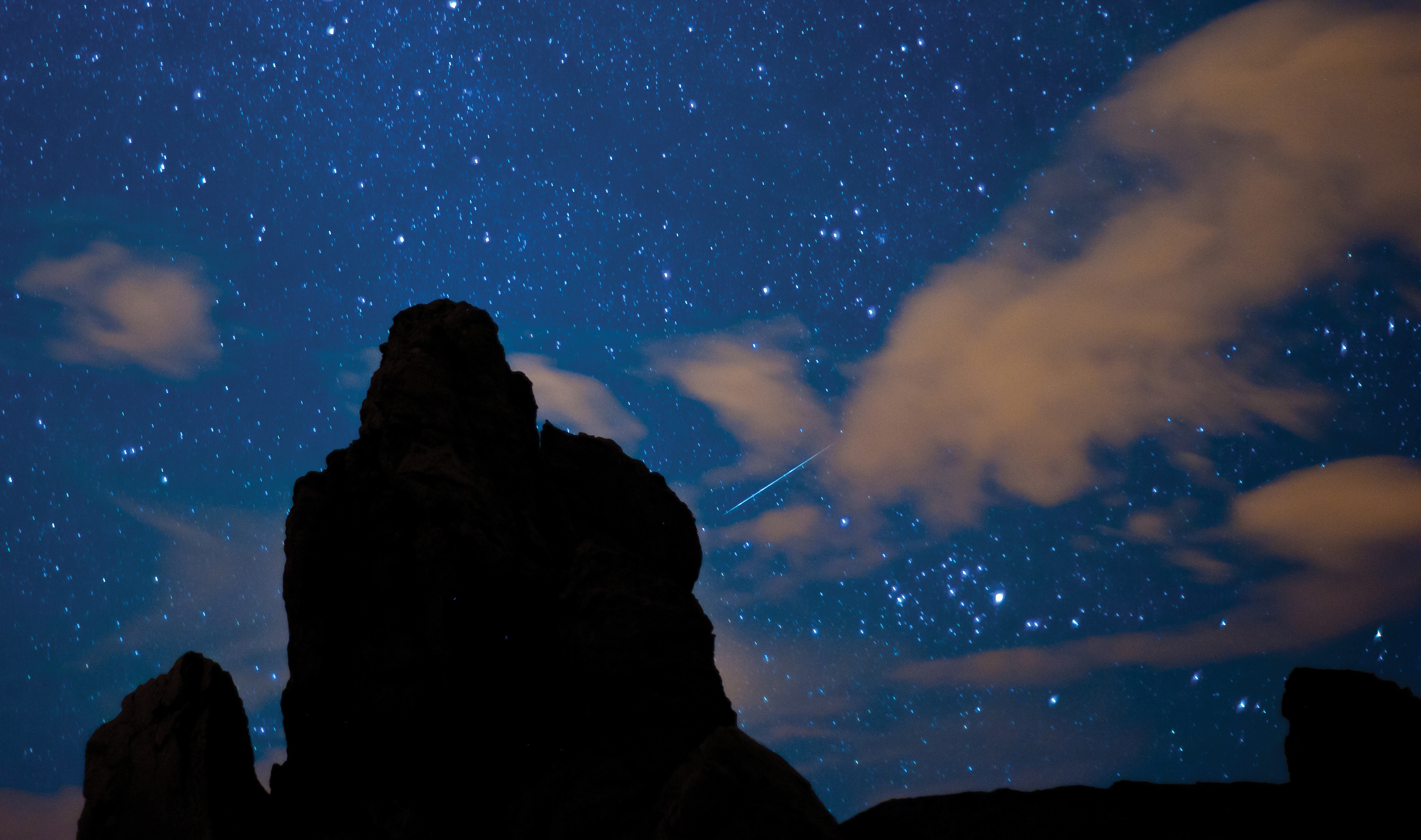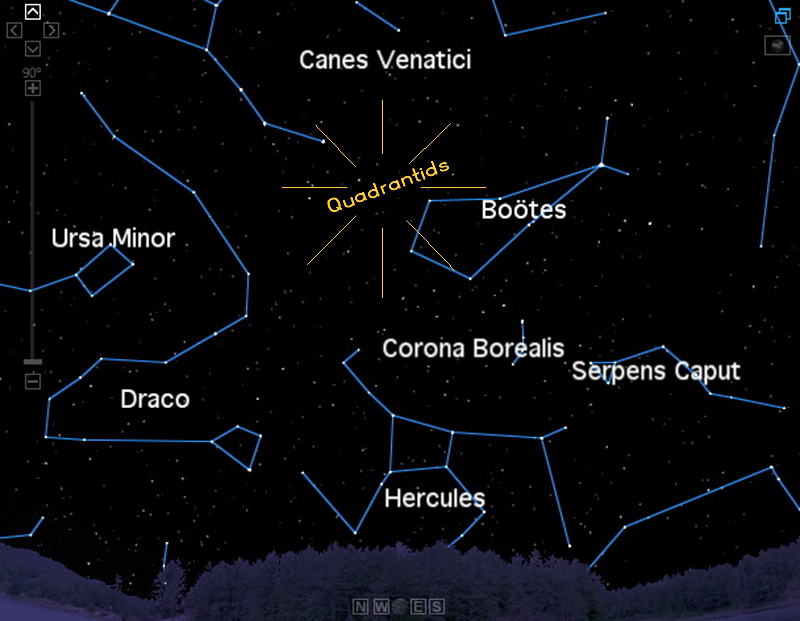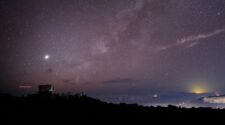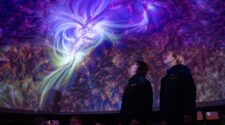
Falling stars, shooting stars and fireballs are all common names for meteors. ‘Catch a falling star and put it in your pocket’ was a number 1 song by Perry Como from 1957. The lyrics, of course, allude to meteors.
To bring in the new year there is a regular meteor shower called the Quadrantids. This will last from January the 1st to the 5th with the peak occurring on January 3rd. These meteors will appear to emanate or radiate from the Bootes constellation. This rises in the east at around 1am so optimal viewing will occur early morning just before sunrise. The Quadrantids is quite a prolific meteor shower with an hourly rate of 100 meteors when the radiant is directly above.
What are meteors? Where do they come from?
There are a number of terms relating to meteors describing the various stages of their existence. Starting as a meteroid these can range from tiny dust sized particles to huge bus sized objects that move through space. Many millions of meteoroids approach us every year, but only a tiny fraction are seen and even fewer make landfall.
As the meteoroids come into contact with Earth’s atmosphere the friction of entry heats them up until they glow brightly and become visible to the naked eye. At this point they are know as meteors. Meteors can be seen at any time during the year but there are some particular periods when they are more prolific and form vivid displays in the sky known as meteor showers or spectacular meteor storms.
Most meteors burn up in their journey through the atmosphere, but some survive the journey and crash into the planet’s surface. If they make landfall they are known as Meteorites. Around 500 meteorites a year make it to the ground, but very few of these are actually found. They range in size from a pea to the size of a football, and can either be rocky, metallic, or a combination of both.
Some meteors can be predicted and these occur at set times every year. These are the meteor showers such as the Quadrantids which are the particles and debris from passing comets that come into contact with the Earth’s orbit. As the Earth and the commits have predefined orbits the intersection of the paths can be calculated and thus the meteor showers predicted.
There are about 60 named meteor showers each year. Some of these can be spectacular, whilst others will be hardly noticed. The most well known ones are: Quadrantids, Alpha Centaurids, Persids, Orionids, Leonids, and the Geminids (listed in order of appearance).

Planning guide for seeing the Quadrantids meteors
The best way to watch the Quadrantids meteor shower is from a dark location, the darker the better. Bearing in mind that the meteors will seem to be coming from the Bootes constellation then the best time to see them in their full glory would be when Bootes is directly overhead. However this time the highest Bootes gets is about 60 degrees just before dawn.
This year there will be the added complication of the Moon being in the first quarter with 50% of its surface illuminated. This means that the sky will not be very dark until after midnight. However this should not be a problem as Bootes rises just before midnight as the moon is setting.
You do not need any special equipment to watch the meteors, indeed the best way to see them is with your naked eyes. It is better to look away from the radiant as though the meteors will seem to come from Bootes they will be observed some distance from the constellation. So if you locate the surrounding constellations of Hercules, Draco or Ursa Major then you should see the meteors streak through these stars.
Although you will not need equipment to view the meteors you will certainly need some bits and pieces to watch them comfortably. First and foremost is some form of reclining chair like a deck chair or sun lounger. You will be gazing up so need to be in a gently reclined position.
Secondly you need to have sufficient clothing on to keep warm. If the weather is kind then you may be out for a few hours at the coldest part of the day. So wrap up warmly with lots of layers. If you are away from the tropics consider taking a sleeping bag, and also a survival bag. The combination should keep out the cold and let you stay out to enjoy the spectacle.



